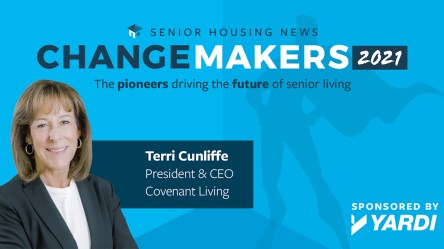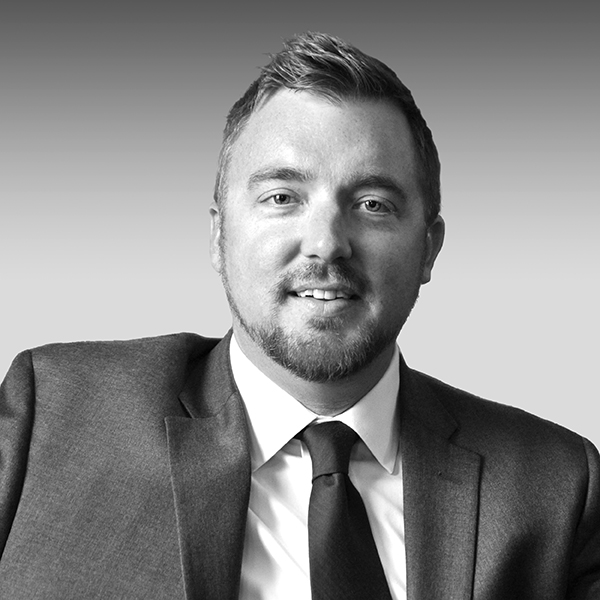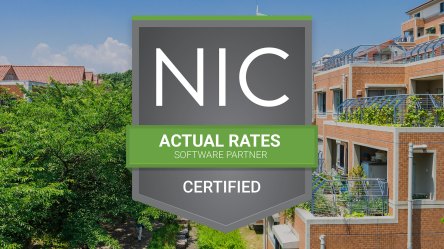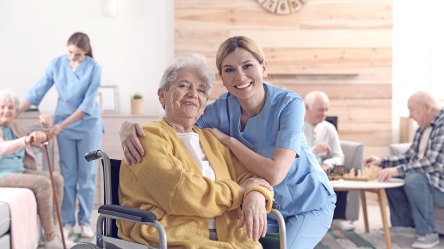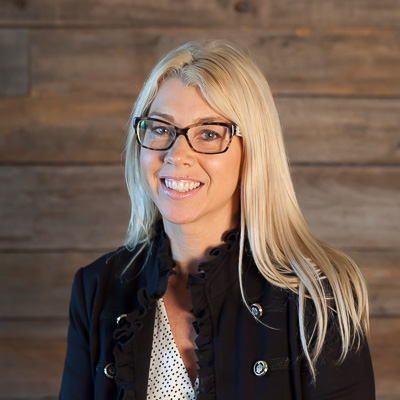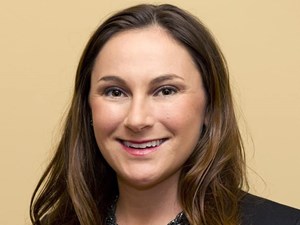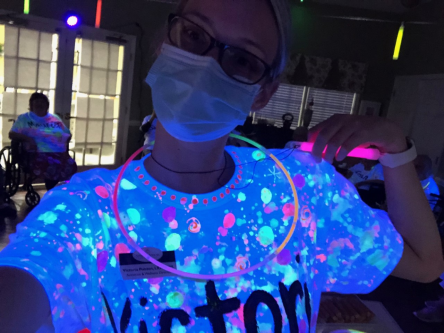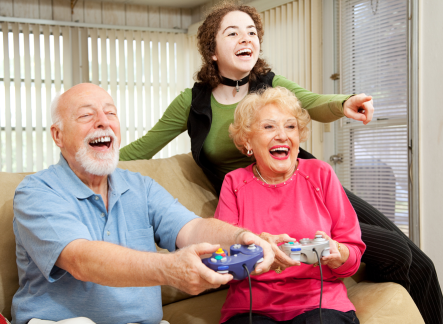While the pandemic has shaped senior living as we know it, there’s no shortage of industry experts to provide guidance, tips and insights as we move forward. Sponsored by Yardi and presented by the National Investment Care for Seniors Housing & Care (NIC), an upcoming webinar will huddle experts and leaders alike to share their best practices for 2021 — giving senior housing operators the tools to navigate the pandemic’s aftermath. About the webinar In this live leadership huddle, experts will discuss key trends that have shaped senior living in the last year. Through their insights, attendees will learn what trends to watch for — both in the short and long term — and best practices to stay ahead of the curve. We’re pleased to highlight the primary speaker, Fee Stubblefield, a Yardi client and the founder and CEO of The Springs Living. Fee has firsthand experience navigating the ever-changing landscape in senior living. Co-facilitators include: Joe Kiernan, Chief Strategy Officer/SVP, Network Development, Ocean HealthcareMaria Nadelstumph, SVP-Center of Excellence, Brandywine Living About NIC NIC is a nonprofit organization who supports access and choice for America’s seniors by providing data, analytics and connections that bring together investors and providers. Launched as the first of its kind in collaboration with Yardi, the NIC Actual Rates Initiative compiles actual rates and leasing activity submitted by senior living operators. Yardi clients can easily participate by using Voyager Senior Housing to map and extract rent roll data, which can then be exported to NIC and Excel. For more information or to participate, explore the NIC Actual Rates Initiative and complete the online form. To register for the upcoming webinar — Trends That Will Shape Senior Living Post-Pandemic — visit the NIC leadership huddles. The live discussion is set for Wednesday, May 26...
Changemakers Series
Honors Terri Cunliffe
It’s time to recognize a new wave of senior living leaders! Published by Senior Housing News (SHN) and sponsored by Yardi, the Changemakers series is back for 2021 — highlighting exceptional leadership in the senior living industry. With insights captured through in-depth interviews, this year’s Changemakers are recognized for their unique strategies in navigating industry challenges. And there’s no questioning the obstacles the industry has faced — especially during the pandemic. But these visionaries have pushed forward. They’re utilizing their knowledge and skills to pave a bright future in senior living, and they’re here to share their expertise. Released in batches over the next several months, the first interview is ready for you to explore: Meet Terri Cunliffe Changemaker Terri Cunliffe is President and CEO of Covenant Living Communities & Services, a non-profit operator of senior living communities. Since joining the organization in 1988, Terri has devoted her career to improving the lives of seniors — quickly evolving into the leader she is today. Appointed as COO in 2010 and later CEO in 2015, she’s expanded the efforts of Covenant Living and its many communities, introducing proactive measures every step of the way. And with over three decades of experience, Terri is no stranger to change. In the following excerpt from the SHN interview, see how Terri’s knowledge — and dedication — have proven successful in maneuvering through an ever-changing industry, all while leading Covenant Living’s journey to growth. To be a changemaker, you’ve got to be willing to take risks. Do you agree with that? How would you describe your own risk tolerance? When I think of risk, I think the longer I’m in the role, the more risk I’m willing to take, because I understand the implications of that risk. If we...
McKnight’s Panel
Features Fil Southerland
As optimism in outlasting the COVID-19 crisis continues to grow, senior living providers face a new challenge — navigating the business world in the pandemic’s aftermath. Recognizing the need for expert insight, McKnight’s Senior Living is featuring three industry executives in a digital power panel on May 5, 2021. The session will break down strategies in maneuvering through the coming months and beyond. And set to speak is Yardi’s own Fil Southerland, a seasoned expert in the LTPAC industry. Topics at a glance Sponsored by Yardi, the McKnight’s power panel — Preparing for business after the main COVID-19 storm — will explore a range of topics. With an expert viewpoint and strategies to share, Fil Southerland will cover the following subjects, plus more: How to improve operations, both post-pandemic and in generalWhy digital workflows are a mustThe industry’s shift toward interoperabilityStrengthening resident and family engagement, digitally and in person About Fil Southerland Fil Southerland has been involved with the LTPAC industry for over 15 years, and currently serves as Director of Healthcare Solutions at Yardi, where he leads initiatives in electronic healthcare records and interoperability. Prior to his time at Yardi, Fil served as Founder and CTO of ALMSA, Inc., a nationally recognized cloud-based electronic health provider in the Assisted Living industry. With expertise in Health Information Technology, digital privacy and LTPAC policy and interoperability initiatives, Fil is passionate about using technology to improve outcomes for residents and care providers. Don’t miss Fil’s insightful contribution, along with two other expert speakers, on May 5 at 1 p.m. EDT. Save the date and register...
ASHA Marks 30 Years
Of Senior Living Advocacy
It’s an honor to celebrate years of service in senior living, especially for a trusted industry leader like the American Seniors Housing Association (ASHA). As of April 2021, ASHA celebrated 30 years of positively impacting the senior living sector — commemorating various achievements from their three-decade journey. Formed in 1991, the association has provided exceptional support for senior living providers. ASHA continues to engage in the finance, development and operation of the full spectrum of housing and services for seniors. Representing the interests of over 500 companies today, this spectrum includes independent living, assisted living, memory care and continuing care. The early days In honor of the 30-year anniversary, ASHA president David Schless took the time to reflect on the association’s early accomplishments. “ASHA was initially focused on providing a voice for senior living owners and operators on Capitol Hill,” says Schless in a company letter. “We were laser-focused on issues that impacted senior living communities, which at that time included a lot of fair housing and tax issues.” Schless also acknowledges how ASHA paved the way for senior living data. “Because there was virtually no senior living data in the early 1990s, ASHA filled this void to demonstrate that, among other things, senior living was an investment that could in fact be profitable.” ASHA today With 30 years of experience and achievements, ASHA remains at the forefront of senior living advocacy. Through the work of diligent leaders and teams, the association continues to provide legislative support, research and educational opportunities for providers today. Learn more about ASHA and their efforts in senior...
Gain Market Data
For Senior Living
How can senior living operators stay competitive in the market? Accessing data on housing rates, pricing and leasing activity is critical. Fortunately, Yardi’s partnership with non-profit National Investment Center for Seniors Housing & Care (NIC) allows operators to share data seamlessly — increasing the amount of information available in the senior living sector. NIC Actual Rates Initiative Launched as the first of its kind in collaboration with Yardi, the NIC Actual Rates Initiative compiles actual rates and leasing activity submitted by senior living operators. Driven by the need to increase transparency in the seniors housing sector, Actual Rates data includes in-place, move-in and asking rates, as well as leasing activity. Yardi clients can easily participate by using Voyager Senior Housing to map and extract rent roll data, which can then be exported to NIC and Excel. Many senior living companies have already committed to providing monthly data feeds for the Actual Rates Initiative — covering more than 250,000 senior housing units nationwide. For more information or to participate, explore the NIC Actual Rates Initiative and complete the online form. NIC MAP Data Service In addition to the Actual Rates Initiative, Yardi collaborates with NIC to provide another avenue for accessing data, benchmarks and insights in senior living. The NIC MAP Data Service offers unbiased market-level data on the entire sector’s property types and care segments — supplying data from more than 15,000 properties within 140 U.S. metro markets. Here’s how it works. To further combat the lack of transparency in senior living pricing, participation in NIC MAP allows data to flow into Senior IQ, our business intelligence solution. Yardi clients who have an active NIC MAP account can benchmark against competitors on occupancy, rent and rent growth. For those that do not yet subscribe to NIC MAP, internal benchmarks are...
Brightview Shines
Fortune 100 ‘Best Company’
Brightview Senior Living, operator of communities in eight Eastern U.S. states, has won accolades over the years from workplace culture authority Great Place to Work® and Fortune magazine for being among the country’s best workplaces for women and for aging services. In April, the Baltimore-based Yardi client claimed yet another honor: a place on the coveted Fortune 100 Best Companies to Work For list. In an interview with McKnight’s Senior Living, Brightview CEO Marilynn Duker said that the company earned its No. 92 ranking with a supportive work culture and strong core values, which Brightview summarizes as STARS (service, teamwork, action, reputation and success). That foundation, in turn, enables the company to create great places to live. The core values are embedded in all onboarding, training and performance review activities. “We worked really hard to make sure at all 42 of our open communities and our home office that our associates came first,” Duker said. One example of Brightview’s “people first” focus happened last year at the outset of the COVID-19 pandemic, company president Doug Dollenberg told McKnight’s. The company provided premium pay, food pantries and free meals for workers, among other benefits. Many employees reported that they felt safest at a Brightview community, he said. Fortune 100 Best Companies rankings are based on employees’ responses to a survey that measures trust, daily experiences with company values, the ability to contribute new ideas, leadership effectiveness and other attributes. In compiling this year’s list, Fortune found that 89% of Brightview employees consider the company a great place to work. Ninety-two percent feel a sense of pride and a similar percentage agree that “my work has special meaning: this is not just a job.” “There are a lot of amazing companies doing great work in the...
Aegis Living
Named Great Place to Work
While the past year has been challenging for senior living providers, they haven’t lost sight of what’s important — keeping residents, families and staff safe and healthy. And for Aegis Living, their dedication and genuine efforts haven’t gone unnoticed. Not only is the company prioritizing resident care in the face of COVID-19, they’re also working to protect the well-being of their employees. That’s why they’re certified as a great workplace by independent research firm Great Place to Work US. “With nearly 2,000 team members surveyed across 32 locations, Aegis Living received a 75% trust index score after being evaluated on more than 60 criteria of team members’ experience on the job, including community impact and feeling that their work has special meaning,” shared Aegis Living on LinkedIn. “We’re so proud of our teams and our purpose-driven organization.” Building a stronger culture Meeting the criteria for a Great Place to Work certification is no easy feat. Leaders must constantly strive to build a better environment for their employees — laying the groundwork for an inclusive culture, high levels of trust and a true passion for the work being done. Dwayne Clark, founder and CEO of Aegis Living and Senior Housing News/Yardi Changemaker, has built just that. With extensive experience in senior living, Clark has focused on listening to employees, incorporating their ideas and helping them pave a successful career path. And since starting Aegis 20 years ago, company culture has remained a top priority — including during the pandemic. Clark attributes a large part of the company’s success to his team. In this light, Aegis Living’s admirable culture is a combination of excellent leadership and dedicated employees. Becoming an award-winning provider Aegis Living’s recognition doesn’t stop there. In addition to the Great Place to Work...
Promoting Health Sharing
With Senior EHR Tech
Electronic health records, or EHRs, have evolved into a necessity over the past few years in the senior living industry. In fact, a LeadingAge study in 2019 found that nearly 76% of the nation’s 200 largest nonprofit, multi-site senior living organizations use EHRs, as do the majority of single-campus senior living communities. EHRs enable care staff to chart and document residents’ medications and transitions between care settings in real time. Along with this efficiency, notes PharMerica, a pharmacy services provider for the senior living industry, senior community operators “are finding that EHR can help do things like boost occupancy and profitability. And vendors are finding easier to promote EHR benefits around greater resident engagement, streamlined workflow and reduced staff turnover.” Additional benefits of EHRs include facilitating Medicare and Medicaid reimbursements and ensuring compliance. Interoperability is crucial There’s yet another dimension to EHRs. Senior Housing News reports that some providers adopting EHRs “are actually going a step further to connect those EHRs to larger networks in the interest of electronically sharing information with doctors, hospitals or other clinicians.” Making such exchanges securely across multiple systems requires connection to a service provider for health information exchanges, or HIEs. “It’s only a matter of time before mounting state and federal pressure to connect EHRs to HIEs becomes too difficult for senior living providers to ignore,” the news source reports. Some in the industry are still playing catch-up. Clinical information is still often shared via fax, phone or printouts, opening the door to mistakes and omissions. And patients often receive paper medical records when they are discharged, creating additional opportunities for documentation errors and impeded care coordination. “The COVID-19 pandemic has amplified the importance of interoperability and the ease in which clinical information needs to be available to an entire healthcare community,” says Jon Elwell, CEO of Scottsdale, Ariz. interoperability provider Kno2. “We cannot rely on paper fax for this important task.” Creating seamless transitions Going forward, the need for interoperability among acute care, private practice, skilled nursing and other healthcare partners will spur the development additional for care transition and coordination. That means “seamless care transitions and sharing of critical patient information between the senior living community and the providers participating in their care, improving coordination and reducing administrative burden from a historically manual process,” Elwell says. Once implemented, this interoperability will spur “increased efficiency and quality outcomes, improved ability to avoid adverse events and timely access to information from your patients’ other providers,” according to the Minnesota Department of Health. “Creating shared care plans and following up on the execution of those plans to optimize outcomes, reduce length of stay, or eliminate unnecessary hospital admissions via HIE will be key,” adds Majd Alwan, senior vice president of technology and executive director of the LeadingAge Center for Aging Services Technologies, an advocate for technologies that improve the aging experience. Yardi’s contribution to EHR interoperability includes a partnership with Kno2®, whose Interoperability as a Service™ drives connectivity for health data networks. Interoperability as a Service’s integration with Yardi EHR lets Yardi clients electronically send and receive health data, ensuring safer clinical care transitions. Look to The Balance Sheet for more updates on the continuing evolution of EHR capabilities, which PharMerica says have the potential to “revolutionize the way seniors are treated and cared for in the years to come.” For more on Yardi’s electronic health record solution for senior living, visit the Yardi EHR product...
Assisted Evolution
In Senior Living
Assisted living facilities, which fill a need for seniors who don’t need nursing homes but can’t live independently, are a mainstay of senior care. The American Health Care Assn./National Center for Assisted Living counts nearly 1 million licensed beds in about 28,900 communities in the U.S. But even as assisted living holds stature as the fastest growing residential housing for older Americans, it may surprise some to learn that this model didn’t assume its present-day form until the 1980s. The roots of assisted living in America can be traced at least as far back as 1713 with the founding of an organization designed to care for seniors in Philadelphia. Foster homes and group homes became the norm later in the century when family members couldn’t care for a senior loved one. By the mid-1800s, religious and fraternal groups opened nonprofit homes for seniors, the genesis of the modern care system. Hundreds of nonprofit old-age homes were built in the late 1800s and early 1900s, with many adding hospitals, staff homes and other structures as their populations grew. Urbanization and tuberculosis epidemics helped spur state and local governments to develop institutions that provided chronic care. Nursing care in homes also became popular, with the number of visiting nurse agencies more than doubling from 1909 to 1924. By the middle of the 20th century, advances in medicines such as penicillin, the expansion of various assistance payments, and the exodus of men and women from the home during World War II were among the factors that prompted the further development of care facilities, including boarding homes for seniors. The private nursing home industry debuted in 1950, serving 270,000 people by 1954. That year, Congress provided funds to nonprofit organizations for the construction of skilled nursing facilities that met certain...
EHR Interfaces
Senior Living Interoperability
Yardi has a long history of providing interface solutions that enable its clients to exchange information with third-party vendors of solutions for applicant screening, online billing payments, renters insurance, service requests and many other business requests. That interoperability extends to senior housing community operators who wish to connect with ancillary operations solution providers. Interfaces allow third-party partners and Yardi EHR users to exchange information seamlessly and securely. Operators can utilize standard interfaces to connect senior living integration partners. Also, operators can optimize care transitions and enable the secure flow of information to and from EHR. Among Yardi’s interface partners for senior living is eMenuCHOICE, a St. Paul, Minn.-based dining management and point of sale application for senior living communities. Other providers that Yardi has welcomed as senior living interface collaborators include abxtracker, which specializes in antibiotic and infection tracking control solutions; Healthconnex, a leading provider of software used for infection prevention and control; and Kno2, which creates centralized accounts that enable efficient and HIPAA-compliant exchanges of resident documents. The list of Yardi senior living interfaces continues to grow. Created in some cases as a result of client requests, the added partnerships will enhance interoperability in such operations as vital signs and weight monitoring, nurse calls and...
Senior Living Ebook
Marketing with RentCafe Reach
Online searches have become the favored route for seniors seeking a residential community. That’s why senior living community operators increasingly turn to search engine optimization (SEO) to help prospective residents find their properties. A powerful tool supporting that effort is RentCafe Reach Senior Living, an advanced online marketing services solution that enables execution of SEO plus pay-per-click advertising, social media posting and reputation management from a single platform. Yardi is spreading the word about this platform and the online marketing experts who support it with a new ebook, titled “4 Ways to Get Found Online.” The publication illustrates how RentCafe Reach Senior Living: Creates an exceptional online presence that fills vacancies. Increases traffic with optimized content that positions communities for maximum search visibility. Drives leads with impactful ad campaigns, managed by AdWords specialists. Keeps pace with Google’s algorithm changes. Formulates and executes a full marketing plan tailored to a community’s goals. Engages prospects with curated social media local content and boosted posts. Strengthens reputation control by monitoring and responding to online reviews. As the ebook says, “The right digital marketing strategy makes all the difference, but building out a plan – and sticking to it – takes dedicated resources, consistent research and lots of elbow grease.” Read it to discover how RentCafe Reach Senior Living makes the process much easier and...
Tips for Thriving
With Senior Living Marketing
The senior housing industry is taking steps to transitioning from the COVID-19 era with policies that emphasize safety and resident service. Nicole Moberg, COO of Atlanta-based Thrive Senior Living, offers insight into successfully marketing senior communities during and after the pandemic. Below are excerpts from her recent interview with Multi-Housing News. How has the outbreak impacted Thrive Senior Living communities? Moberg: From early on, we were one of the first senior living communities to prioritize testing—backing our belief that every resident and team member should be tested as often as possible for the safety of the residents as well as our community. We also developed the “Take Off to Thrive” marketing concept, with a 30-day new resident communication checklist. This served to minimize resident isolation and loneliness and even included an adapted red carpet “landing day/move-in” experience. We view our communities as the safest place to be [with our] proper training and education, personal protective equipment, disinfection procedures and aggressive COVID-19 testing programs. How have your marketing strategies changed? Moberg: We pivoted by creating COVID-19 sales strategies including altering our messaging to focus more on care and safety and how we can help people during challenging times. Digitally, we worked to bring on a chief storyteller who showed a behind-the-scenes look at Thrive culture, created a YouTube channel to share online content to increase awareness when families could not visit and increased online presence as we allocated more toward digital spend to drive more traffic to our website. We saw increased sales throughout the pandemic with safely executed event activity. What role does technology play in your marketing? Moberg: We sourced a new video app that allows us to send videos to prospects as a follow-up; a platform to enhance virtual tours; a “thank you”...
Expanding Entertainment...
For Senior Living
Many senior living community operators are finding creative new ways to broaden their residents’ entertainment and activity options. In fact, Forbes reported in November 2020, entertainment has emerged as a marketing differentiator. “Many [seniors] are sharpening their focus on independent-living communities that not only provide creature comforts and an aesthetically pleasing brick-and-mortar living environment, but hospitality-inspired entertainment, trips and outings enabling highly-sought connections. Saying, in effect, ‘Let us entertain you,’ is good business for senior living communities.” That’s why “savvy senior communities are emphasizing the delivery of socially focused programming to bring mature adults together in fun, entertaining and educational ways once they’re safely able to drop the masks and rub shoulders again.” Even before the lockdown, “many retirement communities [were] stepping up to the challenge and redefining what fun looks like,” according to Denver-based Spectrum Retirement Communities. “If you were used to hosting get-togethers with friends and family, there’s no reason for that to change after moving to a senior living community,” said Brad Kraus, the company’s president and chief executive officer. “Those of us in charge of planning entertainment need to focus on designing activities that are elevated, purposeful and the entire family can experience.” Spectrum once sponsored a nationwide gingerbread house design competition with residents, team members and family members. One community in Texas came up with 3-foot-tall creation made of 600 sugar cookies, six buckets of frosting and 30 pounds of candy. Another in Colorado created Pike’s Peak facsimile. Spectrum residents have also participated in volunteer activities involving pet shelters, waste reduction programs and homeless support, among others, “Why not make it possible for residents to continue giving back to the community with their family by their side?” Kraus says. “It’s our job to create that possibility. We want to...
Aspire Available
For Senior Living
Yardi Aspire gives senior living community operators the tools to train their staffs in everything from software skills and compliance to company policies and career development. The system’s convenient on-demand course content and documents help teams work more productively and efficiently. What training topics can be covered through Aspire? Everything from clinical skills, safety, new employee orientation and health records compliance to leadership, time management, software applications and more. As an added benefit, users seeking to customize training can build their own content and add pre-built videos. Equally important, users can create, maintain and administer courses without adding IT resources. The system also accommodates courses from other learning management systems while offering convenient esignature and employee survey capabilities as well as collection functionality for other types of surveys. “Aspire projects energy, forward focus and confidence. When employees feel those emotions at work, they are positioned to gain career skills and make a difference in their organizations. That’s exactly what Aspire brings to our clients through its broad scope of features,” says Terri Dowen, senior vice president of sales for Yardi. Learn more about how Aspire can pave the way for better community management for residents, operators and family...
Online Marketing
Ebook for Senior Living
Knowing what not to do is as important as understanding what should be done. That’s a key takeaway from a new Yardi ebook designed to help senior living communities market their offerings effectively. “8 Do’s & Don’ts for Senior Living Community Websites” offers tips for sprucing up digital curb appeal, maximizing the impact of a website’s most visited pages and more. The list of “dos” includes showing multiple views of a floor plan, helping prospects identify the unit that meets their needs and boosting traffic by sharing images on social media. The “don’ts” address rising above a bad user experience, avoiding inferior photography, not expecting photos to speak for themselves and resisting the impulse to mimic competitors. Looking for new ways to use your marketing website to make your senior living community both more visible and more appealing to prospective residents? Read the ebook for all the do’s and don’ts of getting those prospects to your page and into your...
Validus Senior Living...
Adapts Quickly to New Norms
Lindsey Hacker is the CFO of Tampa, Fla.-based Validus Senior Living, which manages facilities for independent living, assisted living and memory care in Florida, Georgia, Louisiana and Texas. Hacker joined Validus in 2017. Here she offers insight into the twin challenges of providing exceptional care while innovating. The following is excerpted from an interview published in Multi-Housing News. How have you been ensuring the safety of residents and staff since the onset of the health crisis? What changes do you expect to be temporary and what is here to stay? Hacker: Like most of the world, our entire operating model needed to shift very quickly to ensure the safety of our residents and teams. Mask usage, hand hygiene, social distancing and personal protective equipment are now second nature. We screen all associates and any vendors or visitors and take their temperatures prior to allowing entrance to the building. Our cleaning process and solutions changed to using nontoxic chemicals against COVID-19 and performing more frequent cleaning. We added ultraviolet light technology, which is not common in assisted living. These UV light cabinets give our teams the ability to sanitize and disinfect items in less than 5 minutes—perfect for high-touch items like keys, phones, eyewear and our iCare technology devices. I think the pandemic has made us have a stronger focus on all aspects of infection prevention, so although we are hopeful we will not have to remain 6 feet apart, many of the other precautions will remain. Now that vaccines have become available, how is Validus approaching the vaccination process? Hacker: We are approaching it with education, positive reinforcement and role modeling. For our residents, we are seeing very high participation rates, which is very encouraging and not completely surprising since this generation saw polio...
Social Seniors
Thriving with HH Hunt
Have you ever heard the saying that attitude is everything? How we choose to respond to a situation impacts our outlook, our possibilities and the responses of those around us. During tough times, one young woman in Raleigh constantly recommits to her positive attitude. Her decision to do so has positively impacted the entire community. Meet Victoria Meet Victoria Polston, activity and wellness director at Spring Arbor of Raleigh, an HH Hunt Senior Living community. Victoria is like many employees in assisted living communities: compassionate, patient and heavily caffeinated. She also exemplifies personality traits that have become indispensable during the pandemic: creativity, grit and optimism. As cities issued quarantine mandates in the spring, Polston faced a community of seniors who were more isolated from their loved ones than ever before. Excursions and visitors were no longer an option. Some seniors couldn’t understand the severity of the pandemic or their vulnerability. They were hurt, depressed and confused that their loved ones were no longer coming to visit. Polston got creative with engaging activities for her residents. “My goal is to make the lives of residents fun, active and worth living,” says Polston. “When I do something, I like to go all out.” Fun for every season In the warmer months, Polston offered seniors hula dancing and a luau, fake tattoos, a Mardi Gras party and a butterfly exhibit. She even coordinated a farmer’s market on the premises to replace an excursion that residents missed. As the weather cooled down, the activities continued indoors. Seniors made gourmet truffles, and danced during a neon glow stick party. They customized their shirts with glow-in-the-dark paint and donned glowing necklaces and bracelets. “I filled our activity room with black lights and all my residents were so excited when they...
Senior Wellness
Community Connections
Socialization is a significant part of senior wellness. By getting the members of the neighborhood involved in activities at your community, you’re offering healthful, value-add services for your seniors that truly make a difference! Below are a few suggestions on how you can improve social opportunities with community support. Animal shelter collaborations are a fun way to expose seniors to the joys of pets without the daily responsibilities of pet ownership. Seniors are able to play with and cuddle their new furry friends, reaping the health benefits of pet interactions. Girl and Boy Scouts projects offer seniors the opportunity to teach and learn from local youth. Contact your local chapters regarding projects such as building raised garden beds, installing rainwater recycling systems, or beautification projects. When seniors have experience in these areas, they are able to feel helpful and knowledgeable. When the experiences are new, senior learners stimulate their brains and feel the invigoration of developing new skills. Student-led tech classes equip seniors with the basic skills needed to stay in touch with the world beyond their senior community. Navigating Zoom and Facetime, for example, allow seniors to stay in touch with loved ones. Computer skills classes make it easier for seniors to take charge of their care curriculum. For today’s students, these skills are second hand and a fun way to get the community service hours they may need for school. Trips to a local ranch for equine therapy come with several advantages: a scenic trip to rural area, the benefits of equine therapy, and the pleasure of artwork and animal interaction. Don’t worry—equine therapy does not mean your seniors must mount the horses! Ask camp leaders if it’s appropriate for seniors to interact with current class members. Serving as a dance recital...


